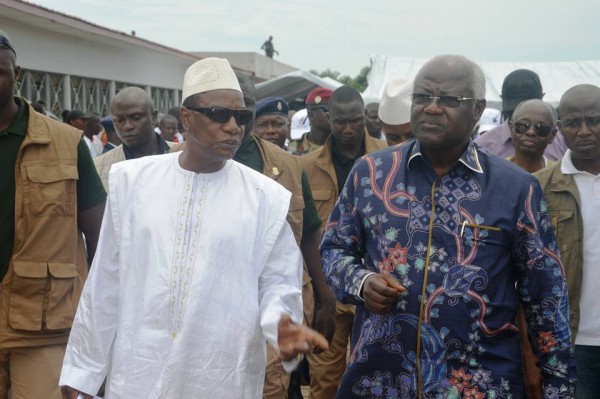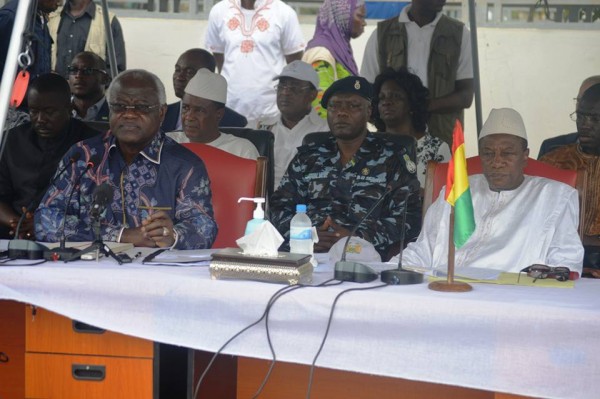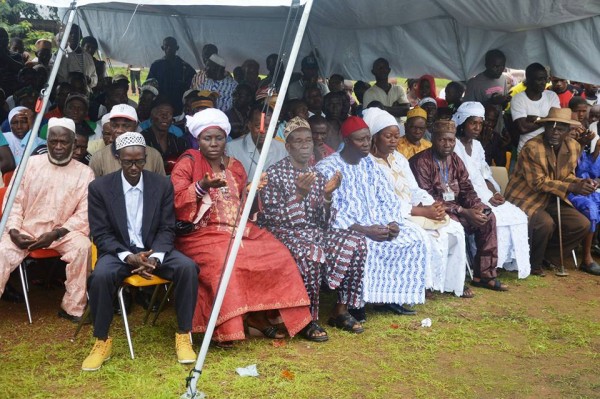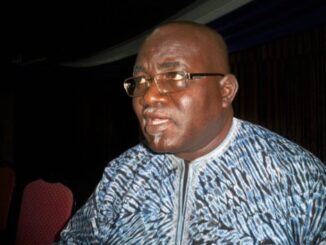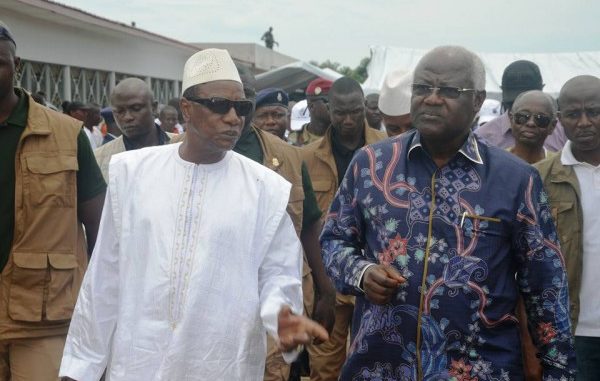
By State House Communications Unit
Freetown – June 6, 2015; Since the Ebola outbreak just over one year ago, the Mano River Basin has been beset with difficulties to end the scourge. The epidemic has ravaged the three worst-hit countries of Guinea, Sierra Leone and Liberia. Latest WHO figures show that there have been 15, 037 laboratory confirmed cases with 11,164 deaths. While Liberia has now been declared free of the disease, Guinea and Sierra Leone are still struggling to achieve zero status.
On Friday June 5, 2015, Presidents Dr. Ernest Bai Koroma and Professor Alpha Conde met at the border town of Gbalamuya in Kambia district, Republic of Sierra Leone as part of an intensified bilateral response to end Ebola. The two presidents reaffirmed their commitment to continue cross-border surveillance and collaboration and encouraged full community ownership of the fight to ensure zero Ebola infections in both countries.
Whilst they acknowledged the determination and remarkable courage demonstrated by the peoples of both Guinea and Sierra Leone in the face of this horrific virus, the two leaders however expressed grave concern over the persistence of new infections largely in the Susu dominated communities. They therefore admonished them to be compliant with the bye-laws and the general health regulations in order to break the chain of transmission.
Observers say the recent new infections have been recorded largely in the Forecariah Prefecture in Guinea and Kambia district in Sierra Leone – both at the official border crossing point into the two countries. The persistence of the virus in these predominantly Susu communities has been attributed to their strong Islamic traditions. Islam emphasized on the ‘suthra’ culture which obliges the family to tend to their sick and bury their dead in dignity. But critics say such practices cut across all communities and if others have cooperated under these difficult times and achieved zero, our brothers and sisters in those border communities must do the needful to eradicate this particularly virulent virus.
President Koroma described the MRU strain of the Ebola virus as the worst ever in the history of the epidemic which has attracted attention from across the globe. He went on to say that it was now time to talk straight to the people to do the right thing. “I don’t think we will continue to compromise anymore especially when we are at the tail end of the fight,” he admonished.
The President registered government’s profound satisfaction over the improvement of the Ebola results but reminded all that Ebola has not gone yet until the two countries record zero case for 42 days. ”If people fail to abide by health regulations being put in place Ebola will not end”, he warned.
President Koroma therefore urged hotspot communities on both sides of the border to refrain from the traditional and religious practices of washing corpses, curing the sick, the act of unsafe burials. Health experts say those practices are the reason holding back the eradication of the ‘stubborn’ virus in both Guinea and Sierra Leone.
On his part, President Conde said they have agreed to internalize the MOU signed on the 23rd March 2015 by both governments to jointly end the outbreak.
Both leaders announced the practical restriction of movement along border communities of both countries. In this regard, they have ordered their security personnel and local authorities to reinforce the law, and take ownership of the fight to end the epidemic.
Acting Special Representative of the United Nations Secretary General, Peter Graaff said, on behalf of UNMEER, that the results are encouraging and called for collaboration between both countries to end the spread of the disease. The UN envoy pointed out willingness on the part of communities as the prime action to end the outbreak; adding that, “the fight is now in the hands of communities”. The peoples of the two countries and international community now look anxiously forward to the impact this high level visit will have on the ground.

